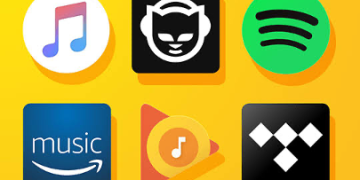Instructional design is a widely-used and valuable role in the world of business. But how do you become an instructional designer? What exactly does it mean to be an instructional designer? Also, how will learning or eLearning instructional design help you prosper? Instructional designers can make or break a user experience, so let’s explore the ins and outs of this exciting field.
ID Is About Helping People Learn
Instructional design is more than just how you format content and choose colours. Instructional designers have a holistic view of learning that goes beyond the scope of any one discipline.
It isn’t just about technology and design; it’s also about business goals, learner characteristics, and context. And the market for it is growing. For instance, the average annual salary of an instructional designer is around $100,000 in Australia.
Know Your Audience
You need to know your audience. What do they need? What do they want? Do you have any information about their culture, language, environment, level of knowledge and goals? Do they need physical learning or eLearning instructional design? If so, how can you incorporate those characteristics into your design? You need answers to all these questions to easily carry out your job as an instructional designer.
Strategy Comes First, Then Tactics
The first thing to understand about strategy and tactics is that they are two different things. Strategy is the big picture, while tactics are the small details. Strategy is about what you want to achieve and how it will help you, while tactics are about how you will achieve your goals.
Motivate With Design and Content
Use design and content together in the same way an engaging game or story hooks you into learning. Instructional designers can use both design and content to make learning more fun, interactive, and relevant. So, the best way to do this is by combining different media that work together seamlessly. This makes it more fun and keeps them engaged as they explore how everything works together and build their knowledge base around this topic in general through interaction instead of just reading text off paper pages.
Design Is Not Just the Pretty Part
The first thing to remember is that instructional design is not just about making things look pretty. It’s about how people interact with the course, how they learn, and how they feel when they are in the system. Good instructional designers consider all three of these factors when creating their courses.
It’s also important to know that there are two types of learning: explicit and implicit. Clear knowledge requires conscious thought, the type where you “know what you know”. Meanwhile, implicit learning requires no conscious thought; it happens on its own as someone experiences something over time.
Test and Test Again
You can and should test your instructional design with a variety of people, including:
- A small group of people: They’re typically comprised of employees who represent your target audience. They’ll provide context for how well you’ve captured their attention and engaged them in learning.
- A large group of people: With them, make sure you’re testing with an actual classroom-like environment where learners are there to learn and soak up whatever knowledge you’re presenting.
- Different types of learners with different learning styles and levels of experience/understanding need different strategies when taking on new information about a subject matter or skill set.
Instructional design is a complex field, but it’s worth learning. And once you’ve learned how to build a practical learning experience and apply that knowledge in your work, it will change how you view your profession. As such, you can help people learn more efficiently and effectively with all kinds of content.





























































